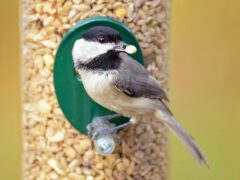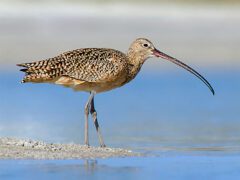Common Pauraque Similar Species Comparison
Main SpeciesCommon Pauraque
Adult male
Long-tailed nightjar. Male's outer tail feathers are white. They are reduced on females, but noticeable in flight. Wings also have a white band that is visible in flight.
© Claudia Brasileiro / Macaulay LibrarySão Paulo, May 10, 2014Adult
Well-camouflaged, brown and gray nightjar. Feathers on the shoulder have buffy tips. Individuals in Texas and lower Rio Grande Valley are grayer than others.
© Joshua Covill / Macaulay LibraryTexas, April 29, 2017Adult
Forages at dawn and dusk near clearings for insects. Rests on the ground and becomes "immobilized" in spotlights.
© Gregory Griffith / Macaulay LibraryTexas, January 01, 1994Adult
Throat patch, which is often very difficult to see, is buffy on females and white on males.
© Ivan Sjögren / Macaulay LibraryAmazonas, June 19, 2010Adult
Active at dawn and dusk, but can become motionless when spotlighted.
© Gregory Griffith / Macaulay LibraryTexas, December 01, 1994Adult
During the day roosts on forest floor where it is nearly invisible.
© Bryan Calk / Macaulay LibraryTexas, November 08, 2018Similar SpeciesCommon Nighthawk
Adult
Common Nighthawks are smaller with pointer wings than Common Pauraques. In flight, Common Nighthawks have a forked brown tail, while Common Pauraques have a rounded tail with outer tail feathers.
© Daniel Irons / Macaulay LibraryMaryland, August 23, 2016Similar SpeciesCommon Poorwill
Adult
Common Poorwills are smaller with a shorter tail than Common Pauraques. In flight, Common Poorwills do not have a white bar on the wings like Common Pauraques.
© Bruce Cyganowski / Macaulay LibraryColorado, October 05, 2015Similar SpeciesChuck-will's-widow
Adult
Chuck-will's-windows don't have the large triangular black marks on the wings that Common Pauraques have. In flight, Chuck-will's-widows also lack the white wingbar seen on Pauraques.
© Luke Seitz / Macaulay LibraryTexas, April 23, 2012Compare with Similar Species
Click on an image to compare
Species in This Family
Nightjars and Allies(Order: Caprimulgiformes, Family: Caprimulgidae)
More to Read
Don't miss a thing! Join our email list
The Cornell Lab will send you updates about birds,
birding, and opportunities to help bird conservation.














